by Jon LeSage, editor and publisher, Green Auto Market
Here’s my take on the 10 most significant and interesting occurrences during the past week…….
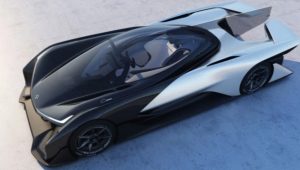 Will Faraday have a Nevada factory?: Luxury electric carmaker Faraday Future may be losing support for its $1 billion electric car factory in North Las Vegas. Nevada State Treasurer Dan Swartz is concerned that Faraday or its billionaire backer, Jia Yueting, founder of Chinese Internet company Leshi, will not be putting up at least $70 million to insure Nevada’s infrastructure investment. Nevada has been under scrutiny lately for incentives to attract outside companies like Faraday Futures and Tesla Motors to set up shop in the state. Tesla and the state government have been defending the $1.3 billion tax incentive package the company was awarded by Nevada lawmakers to bring its Gigafactory lithium ion battery plant to Nevada. The state is offering Faraday $217 million worth of incentives including the infrastructure – roads, a rail line, and water pipes. Faraday will be funding the $1 billion plant. Nevada wants the $70 million from Faraday as security in case the manufacturing plant doesn’t come through.
Will Faraday have a Nevada factory?: Luxury electric carmaker Faraday Future may be losing support for its $1 billion electric car factory in North Las Vegas. Nevada State Treasurer Dan Swartz is concerned that Faraday or its billionaire backer, Jia Yueting, founder of Chinese Internet company Leshi, will not be putting up at least $70 million to insure Nevada’s infrastructure investment. Nevada has been under scrutiny lately for incentives to attract outside companies like Faraday Futures and Tesla Motors to set up shop in the state. Tesla and the state government have been defending the $1.3 billion tax incentive package the company was awarded by Nevada lawmakers to bring its Gigafactory lithium ion battery plant to Nevada. The state is offering Faraday $217 million worth of incentives including the infrastructure – roads, a rail line, and water pipes. Faraday will be funding the $1 billion plant. Nevada wants the $70 million from Faraday as security in case the manufacturing plant doesn’t come through.- Uber driver shooting spree: Ridesharing giant Uber may need to revise hiring standards on its drivers following a horrible killing spree in Kalamazoo, Mich., by an Uber driver. Suspected gunman Jason Brian Dalton, 45, killed six people and wounded two on Saturday night over a 12-mile series of shooting rampages. It ended with the fatal shooting of a father and son browsing the brightly-lit parking lot of a Kia dealership, police said. Local authorities believe Dalton was transporting Uber customers and pocketing fares between the shooting episodes. Uber has confirmed Dalton had passed a background check.
- EVS29 coming up in June: All elements of the electric drive value chain will be represented at the 29th International Electric Vehicle Symposium in Montreal. EVS29 is expected to bring together about 2,000 attendees, including R&D experts, leading manufacturers, top industry executives and government partners from around the world. The event will take place June 19-22, 2016. “EVS29 is the largest global event showcasing electric drive technologies, where we will hear from the experts on technology, trends and continued growth in the industry, exhibitors will offer a hands on experience with their products and services and attendees can test out the latest models and charging equipment at the Ride, Drive & Charge.” said Genevieve Cullen, president of the Electric Drive Transportation Association (EDTA), the U.S. association dedicated to advancing electric drive technologies and organizer of the symposium. Visit www.evs29.org to register or to learn more about sponsorship, exhibition opportunities, and media credentials.
- Koch brothers backing pro-petroleum campaign: A new political advocacy group supporting petroleum transportation fuels and attacking electric vehicle incentives may by rolling out soon. The new group is being backed by brothers Charles and David Koch, prominent donors to conservative causes. Charles and David Koch lead Koch Industries, the nation’s second largest privately held companies; much of its revenue comes from producing petroleum fuels. A Koch Industries board member is working with a lobbying who used to head up the American Fuel and Petrochemical Manufacturers to start up the new advocacy group, according to The Huffington Post. The new group may be spending about $10 million a year for its lobbying and marketing efforts.
- New EV partnership: Aston Martin has set up a venture with Chinese technology group LeEco to jointly develop the British luxury car brand’s first electric vehicle based on its Rapide S. “It brings Aston Martin’s electric car project forward,” said Aston Martin CEO Andy Palmer (and former Leaf advocate in his role as Nissan’s chief planning officer). The joint venture also plans to collaborate with electric carmaker startup Faraday Future.
- Automotive Digest resources: Green Auto Market’s media partner, Automotive Digest, has been reorganized with more emphasis on next-generation automotive technologies – autonomous vehicles, digital marketing, connected cars, and other popular auto industry topics like vintage and classic cars, technology trends, and profiles of influential industry leaders. Take a look at Upcoming Industry Events, which tracks all of the significant automotive events including conferences focusing on clean transportation and fleet management. You can also view links to Green Auto Market and its stories of the week. Automotive Digest also promotes media partners, Fleet Management Weekly and Used Car Market Reports. Check out the latest in video interviews on AD.com, FMW, and UCMR.
- The U.S. Department of Energy’s Advanced Research Projects Agency-Energy (ARPA-E) will host its annual Energy Innovation Summit from Feb. 29-March 2, 2016 at the Gaylord National Resort & Convention Center in National Harbor, Md. Featured Technology Showcase demos and displays include: air and ground robotics display for bioenergy crop breeding; a personalized wireless heating and cooling device for building efficiency; a converted shipping container with solar charging station for four Current Motor Electric Cargo Motorcycles; aerial robotics systems for natural gas monitoring; and a Ford F-150 adapted with an adsorbed natural gas system.
- Transportation and climate change: University of Michigan’s Transportation Research Institute has published a report in support of the 2015 Paris Agreement of the United Nations Framework Convention on Climate Change. The focus of this study was on actions individual Americans can take without a major change in lifestyle to assist in meeting the Paris Agreement, with transportation providing the most viable option. The study concludes that if the average U.S. fuel economy increased to 31 mpg, total U.S. emissions would be reduced by 5%. If the average fuel economy were 56.0 mpg, total U.S. emissions would be reduced by 10%.
- Toy version of Model S: Tesla Motors may have found a tactic for winning over future car owners. Radio Flyer Inc., an American toy company best known for its popular red toy wagon, has collaborated with Tesla to create a drivable miniature version of the Model S for children. The ‘Model S for Kids’ ages 3 to 8 comes in real Model S colors. It has working headlights, a front trunk, or “frunk,” and a place to plug in a portable music player. It has a maximum weight capacity of 81 pounds.
- Electric bus contract: China-based BYD is bringing electric buses to Antelope Valley Transit Authority, located north of Los Angeles. The authority has approved a measure to purchase as many as 85 all-battery buses to be built at BYD’s new facility in Lancaster, Calif., based in Antelope Valley. About $72 million will be spent on 40-foot battery buses, 45-foot over-the road coaches, and BYD’s and the industry’s first-ever all-battery 60-foot articulated transit bus.

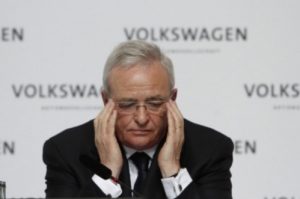 Volkswagen AG is facing a catastrophe that will probably take years to recover from. The outcomes of government agency rulings, recalls, and class-action lawsuits will tap into VW’s cash reserves – and will dictate its future strategic planning. It’s the “perfect storm” as automakers compete to dominate global markets; compliance with national emissions standards, for the most part, is being enforced; OEMs face unattainable expectations on advanced technology innovations; and consumers expect major corporations to live with a fairly high level of accountability and transparency.
Volkswagen AG is facing a catastrophe that will probably take years to recover from. The outcomes of government agency rulings, recalls, and class-action lawsuits will tap into VW’s cash reserves – and will dictate its future strategic planning. It’s the “perfect storm” as automakers compete to dominate global markets; compliance with national emissions standards, for the most part, is being enforced; OEMs face unattainable expectations on advanced technology innovations; and consumers expect major corporations to live with a fairly high level of accountability and transparency.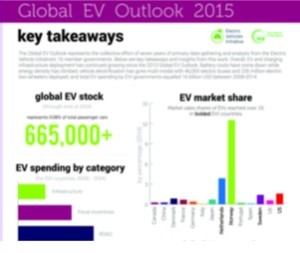 Digging into EV sales forecast: Manheim’s annual Used Car Market Report made a surprising forecast last week: By 2025, electric vehicles (EVs) are expected to make up 25% of global auto sales, and 30 million new EV units will be produced that year. How accurate could this be, with global EV sales reaching about 520,000 units last year, global new vehicle sales hitting around 89 million in 2015, and 2025 coming up in nine years? Manheim thinks that incentives will play a big part, including government programs such as federal tax incentives and state rebates (with California, Washington, and Colorado currently offering the most robust incentives). Population migration to cities will be another driver with cities becoming denser, which is likely to drive adoption of cleaner vehicles and carsharing, both of which will benefit EV sales. Curious about this forecast, I dug into the footnotes. For the 25% of global sales forecast, Manheim cited the
Digging into EV sales forecast: Manheim’s annual Used Car Market Report made a surprising forecast last week: By 2025, electric vehicles (EVs) are expected to make up 25% of global auto sales, and 30 million new EV units will be produced that year. How accurate could this be, with global EV sales reaching about 520,000 units last year, global new vehicle sales hitting around 89 million in 2015, and 2025 coming up in nine years? Manheim thinks that incentives will play a big part, including government programs such as federal tax incentives and state rebates (with California, Washington, and Colorado currently offering the most robust incentives). Population migration to cities will be another driver with cities becoming denser, which is likely to drive adoption of cleaner vehicles and carsharing, both of which will benefit EV sales. Curious about this forecast, I dug into the footnotes. For the 25% of global sales forecast, Manheim cited the 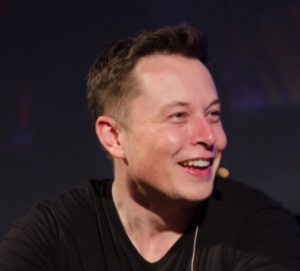 As seen in Green Auto Market and automotive media in general, Tesla Motors can seize center stage for periods of time and then do it again. In the past few years, other automakers (like Subaru, Hyundai, and Kia) have surged forward in sales and market presence; but their brand imaging pales in comparison. That being said, here’s my latest reality check on Tesla’s performance:
As seen in Green Auto Market and automotive media in general, Tesla Motors can seize center stage for periods of time and then do it again. In the past few years, other automakers (like Subaru, Hyundai, and Kia) have surged forward in sales and market presence; but their brand imaging pales in comparison. That being said, here’s my latest reality check on Tesla’s performance: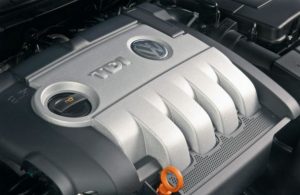 More on the Volkswagen diesel emissions scandal……… Frank Tuch, previously head of VW’s group quality control,
More on the Volkswagen diesel emissions scandal……… Frank Tuch, previously head of VW’s group quality control, 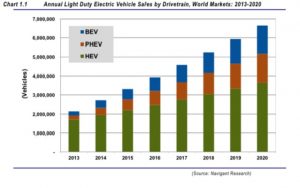 Automakers have understood for years that California, and the overall U.S. market, can’t be depended upon for meeting large-scale sales targets in plug-in electric vehicles. The decline in U.S. sales numbers during 2015 didn’t help, but the overall sales volume had still been small enough for automakers to question their future plans. That’s where global markets have become more important as OEMs look to sell enough volume to justify the resources invested in electric cars through talented employees, R&D, safety and performance testing, marketing spend, and setting up assembly plants to reach economies of scale. That has been the case for Tesla Motors along with its major OEM competitors, which makes China and other overseas markets even more important.
Automakers have understood for years that California, and the overall U.S. market, can’t be depended upon for meeting large-scale sales targets in plug-in electric vehicles. The decline in U.S. sales numbers during 2015 didn’t help, but the overall sales volume had still been small enough for automakers to question their future plans. That’s where global markets have become more important as OEMs look to sell enough volume to justify the resources invested in electric cars through talented employees, R&D, safety and performance testing, marketing spend, and setting up assembly plants to reach economies of scale. That has been the case for Tesla Motors along with its major OEM competitors, which makes China and other overseas markets even more important.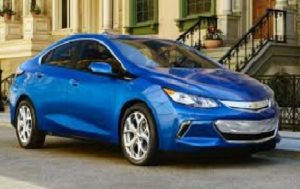 January EV sales: Plug-in electric vehicle sales saw the typical downturn pattern for the month of January. Winter Storm Jonas, which closed parts of the Eastern Seaboard for several days, has meant that less car shoppers have visited dealerships. With 2015 down slightly from 2014 in overall EV sales, January didn’t start this new year on a strong note. The
January EV sales: Plug-in electric vehicle sales saw the typical downturn pattern for the month of January. Winter Storm Jonas, which closed parts of the Eastern Seaboard for several days, has meant that less car shoppers have visited dealerships. With 2015 down slightly from 2014 in overall EV sales, January didn’t start this new year on a strong note. The 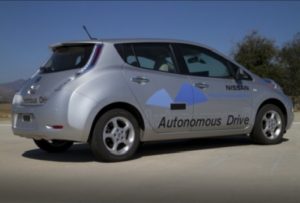 General Motors Co. is betting big on its future in the fast-changing automotive space. Along with its investments in Lyft, Sidecar, and its Maven startup brand, GM has announced management changes to support its next-generation vehicle technologies. Doug Parks, GM’s vice president for global product programs, is now vice president for autonomous technology and vehicle execution. Parks will oversee projects to develop new electrical and battery systems and software for autonomous and electric vehicles, the company said. There are other executives taking positions in GM’s new Autonomous and Technology Vehicle Development Team with similar backgrounds in electric vehicles and technology innovations.
General Motors Co. is betting big on its future in the fast-changing automotive space. Along with its investments in Lyft, Sidecar, and its Maven startup brand, GM has announced management changes to support its next-generation vehicle technologies. Doug Parks, GM’s vice president for global product programs, is now vice president for autonomous technology and vehicle execution. Parks will oversee projects to develop new electrical and battery systems and software for autonomous and electric vehicles, the company said. There are other executives taking positions in GM’s new Autonomous and Technology Vehicle Development Team with similar backgrounds in electric vehicles and technology innovations.